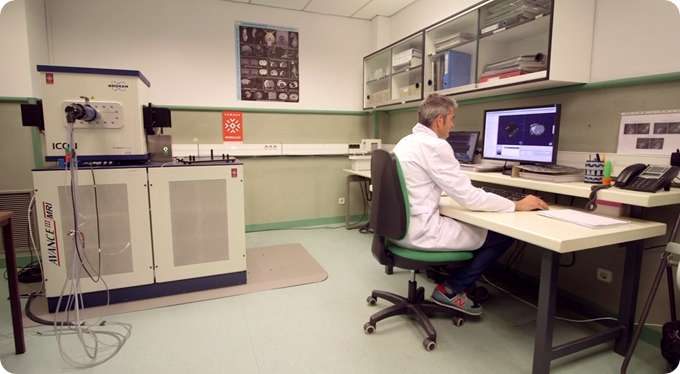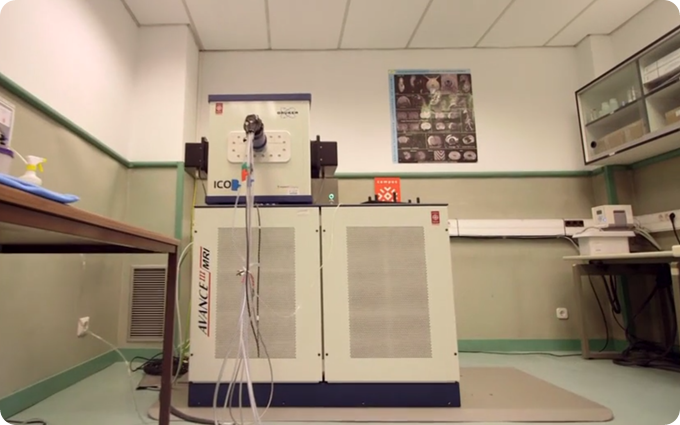An interview with Assistant Professor Juan Manuel Garcia-Segura, Head of CAI of NMR and ESR, Complutense University, Madrid
Please can you give an introduction to your work and the services you provide?
I’m an Assistant Professor at the Department of Biochemistry and Molecular Biology of the Complutense University, Madrid. Until five years ago I had been working here at the university, part time with a private clinic, where I worked in MRI and MR spectroscopy for clinical applications.
Low-field MRI for Routine Experiments
Low-field MRI for Routine Experiments from AZoNetwork on Vimeo.
Around 5 years ago, I came back to the university full time and I am now the head of this facility, an NMR super center, which we call “CAI of NMR and ESR” –CAI standing for Centros de Apoyo a la Investigación in Spanish.
In this center, we exploit different aspects of the NMR phenomenon. One of them is the possibility of obtaining images through MRI. In this facility we focus on MRI and also MR applied to biological tissues - ex vivo tissues through the magic-angle spinning application which is another modality of NMR.
But focusing on MRI, here we are an MRI service provider and I am the head of this facility.
Please can you tell us more about the types of experiments you run here?
We are a service provider of all of the kinds of MR imaging experiments that our users demand. But for 20 years, we exclusively had a BioSpec MRI system from Bruker for this purpose with a horizontal 4.7 Tesla magnet, with a 40 cm bore. But we increasingly had high demand for MR imaging and finally our magnet was completely booked.
We had a long waiting list of users for MRI. We realised that most of the time our magnet was doing routine MRI explorations. That was what our users demanded most. Hence, we decided to acquire the ICON machine for doing routine MR imaging, thus making room for more advanced explorations in our 4.7 T system.
The ICON is especially dedicated to routine exploration of small animals - of course, mainly mice, small rats, or young rats. There are a lot of research clients in the university that use these animal models for research and they want to view the inside of the animal for whatever exploration or experiment they are doing.
Most of the time, we use the ICON for anatomical imaging and routine MR imaging for measuring the size of induced lesions like vascular ischemic lesions in the brain of the mouse, the growth of an implanted tumor in a rat, or the amount of fat inside a rodent that has been subjected to some kind of metabolic alterations.
These are mainly the kind of imaging that we do with the ICON, but I also want to mention relaxometry, that is measurements of nuclear relaxation times. For this, a low field magnet is a suitable approach. Because as we all know, at high-field, relaxation times are less favorable.
As relaxometry experiments take up a lot of time, it was a good idea to have a low field magnet which is well designed for measuring relaxation times. But at the same time we liberated our high-field magnet for doing experiments that do need high-field.
Another kind of experiment we are doing with the ICON is cardiac MRI. We implemented it very recently and we are surprised about the amazing results. In fact, with our ICON, we are currently offering a service of cardiac MRI, involving the study of the structure and function of heart, with a performance that is not too far from what we achieve with our 4.7 Tesla system. I am sure that in the near future this service will be increasingly demanded because of the high quality of the ECG gated cardiac images - not only still images but moving ones too. I am sure that once our users know about this possibility, it will take up a large part of our machine’s time.
So these are more or less the kind of experiments we do with the ICON, always from the perspective of routine MRI explorations.
Is it just yourself that uses the ICON or do other groups come to use the machine?
We provide services mainly, of course, to users of this university; the science faculty uses these kinds of machines, but these are not our only clients. We also provide service to researchers from the Madrid area and even from the Central region of our country.
I don’t have an assigned research group for these machines. I lead the technician group for providing services. Most or all of our work is for different groups, not from a collaboration point of view, but from a service providing viewpoint.
As far as I know, in this region most of the MRI systems are associated, not to a facility or to a central service, but to different research groups that are experts in the technique and they collaborate with other groups just to extend the capabilities of their machines. For our part, this facility was created just to provide service to different research groups whichever their field of interest may be.
The main purpose is to provide service to researchers from the university, this is a university facility, but, of course we are open to the possibility of satisfying the demands of different groups.
How quickly are the non-experts using the ICON able to pick it up, aside from the facts that you are doing experiments one at a time? And how do you find training them?
I would say that with 3 to 4 days of training, a non-MRI expert can be working with the machine in a confident way.

The machine comes from the factory with standard protocols and with the help of Bruker application scientists, it was tuned up to provide best quality images for our special experiments.
There is an underground passing near the site, which causes severe alterations in the magnetic field. The software has the possibility to use navigator echoes. So once Bruker changed or modified all the protocols to use these navigators, the machine performed easily and was apt for even non-MRI expert users.
So, once the sequences were optimized for our studies, the system was ready for easy operation. Thus, now in 3 or 4 days, we can train a non-expert user to use the machine easily and with confidence.
What barriers has the ICON allowed you to overcome?
The main barrier that we overcame with the ICON was the ability to translate the routine explorations to this machine, thus liberating time for more sophisticated experiments that we perform with the high-field magnet.
From the service provider perspective, this is a big barrier. It’s very useful, and needed in our case, to have a machine for daily, routine work. But there is another barrier that we tried to overcome with the ICON: we have limited resources in this center in terms of the technical personnel. We were very interested in the possibility of a machine that any user could work in a safe manner with open access and not being limited by the availability of a technician. Also, we thought that the users wanted to manipulate their animals and their experiments themselves.
I have to admit that at the beginning, this possibility was welcomed by our users. So we established it for users who wanted to do it by themselves. But with time, we have realised that the self-service is increasingly diminishing. Perhaps, one of the reasons for this is that our technicians are so very good. When our users see how efficiently our technicians work, they prefer to hand over this work load and use the saved time working in their own area of expertise.
How satisfied have you been with the performance of the ICON?
If this question required ticking the corresponding check boxes, I would check highly satisfied or highly recommendable.
I am satisfied with this machine because we solved the problems we had before buying this MR system. We liberated the high-field system for more sophisticated studies and shifted the routine exploration to the ICON while maintaining MR image quality.

We could install the ICON in this small room thanks to its small size or small footprint. Additionally, we had to do that inside a room in which we have electronic labs where we have RF coils. So we knew that the machine should be working with people working around it and we needed a magnet with a small fringe field. All this has been solved with the ICON.
At the same time, the running costs are low. Perfect - a happy ending. Yes, we are highly satisfied.
So when you were looking for a new MRI system what was it that led you to choose the ICON specifically, over others you might have looked at?
It was certainly accessibility. When we realised some 5 or 7 years ago that our high-field magnet was saturated, we started looking for a machine that could be installed in our site. We didn’t have much space to install new MRI equipment or the budget for another building or another site. We just needed to attend the demands for routine MR images.
So we were not thinking in high-fields. We wanted a machine which does not have as many site requirements as the high-field superconducting magnets are. It was more or less at this time that the ICON was commercially released.
From the very beginning, we thought this could be a good choice for us. Finally, after getting the financial funds for acquiring it, we saw that the machine had solutions for most of our problems.
We found the right solution for our problem that can be resolved only with a low-field magnet like this and now we are in a very good situation.
So it was the right decision in order to solve our main problem, which was to be able of provide our most demanded service of routine MRI for small animals. So, yes, this was the perfect choice.
It was crucial to have this solution – this alternative. As I said, we were worried about finding a solution to the long waiting list of users for the MRI service. So the ICON was the perfect solution for all these problems, it was the icing on the cake. Now all is perfect and good.

It was the right product we needed for the particular situation we had and probably for similar situations that a lot of people or groups face while providing MR services. They have high-field systems for more sophisticated experiments, but the routine, day to day work needs to be done on a machine which is flexible and ICON is that. So as I said it’s a good choice. I would recommend it.
In the future, if your needs expand would you consider another low-field instrument rather than adding a second high field-facility?
Yes, at this moment we are at a point where we need to upgrade to more sophisticated MRI explorations. We have our 4.7 Tesla magnet as our highest field and we certainly know that if we have to be state-of-the-art, we need to buy a higher field machine; so, with no doubt, this is our main need.
But apart from this, once our users know the possibilities of doing standard MRI images in a safe, fast convenient way without needing to rely on more sophisticated systems, they will increasingly use our ICON. In fact, we are almost about to saturate our ICON.
So we have to start thinking about acquiring another ICON to maintain this capability of doing routine MR imaging and providing the service that our users demand.